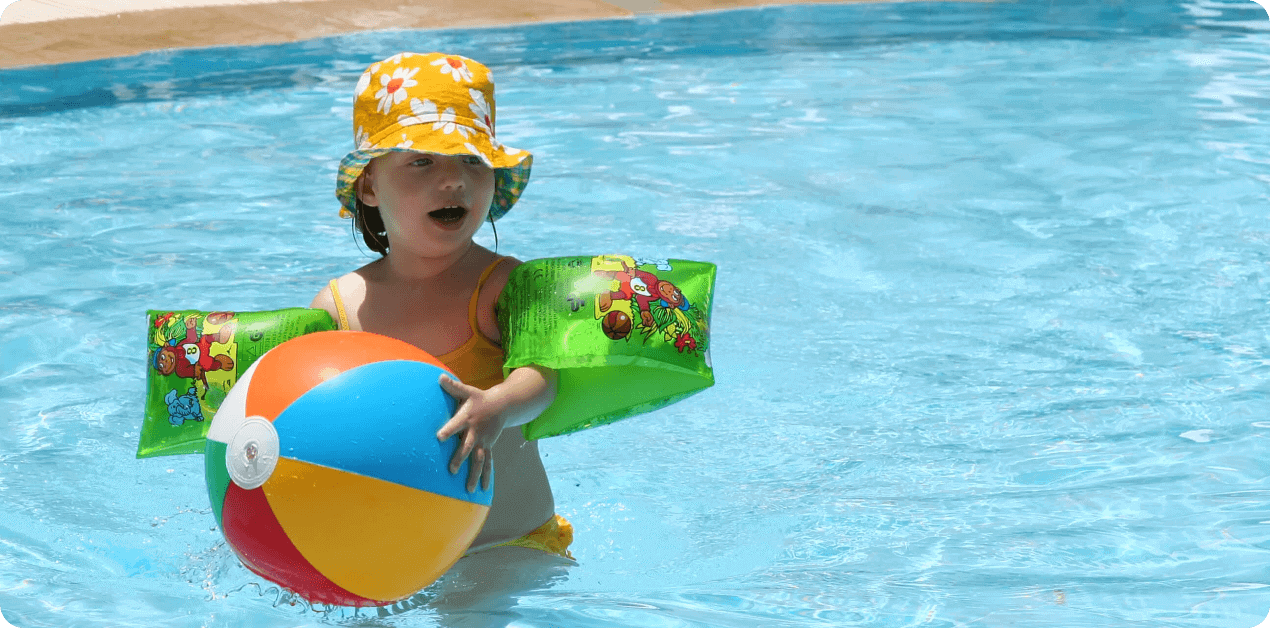Water Safety for Children and Drowning Prevention
Every year dozens of infants and young children drown in swimming pools, in the sea, at recreation sites and in natural water sources. About 40% of drowning cases occur in the sea. It’s important to remember that if he or she is in distress in the water, a child cannot call for help, and it may happen very quickly. Therefore, when in the water or even near water, we mustn’t take our eyes off our children.
Infants and children have a center of gravity that is at the top of their body, meaning that their head tends to drop forward if they fall into the water. When their mouth and nose are covered in water, they cannot rise up unassisted, and are effectively in a drowning state. Infants may drown even in just 10 cm of water.
swimming lessons
In preparation for later swimming skills, one can try out child and parent swimming lessons, from the age of one year, to adjust to water and later to advance to swimming lessons.
In the water – never take your eyes off your children
Safe behavior near water can save lives. You should adopt safety rules when going to the pool (a public or private one), water parks, rivers or the beach with children. One must not leave children unattended near water, even for a moment. Always maintain eye and physical contact with children.
-
1Prepare everything in advance
To avoid having to leave children unattended even for a moment, we should prepare our towels, sunscreen and headgear, water and everything we need in advance and keep it within reach.
-
2Mute your telephone
When your children are in the water, never take your eyes off them. Reading a book or a long call can wait. They need to be within reach, so that we can grab them immediately whenever necessary.
-
3Children above the age of 9 who can swim
They can swim in pairs but only when there is a lifeguard or other responsible grown-up present.
-
4When having group fun
When there are other family members or friends are around, you can organize and rotate “lifeguard” watches lasting 15 minutes, with a different adult responsible for the children each time.
-
5Floats and floatation rings
Floats and swimming vests can be used. It is advisable to use floats that are worn as armbands, but in addition to and not as an alternative to active supervision. Floatation rings are dangerous to infants because their center of gravity is at the top of their body, meaning that they tend to fall into the water with their head forward. In any case, it is important to remember that these accessories are no substitute for adult supervision in any circumstances, so we must mind our children and keep them within reach all the time.
-
6Lifeguard services at the beach and pool
We must swim according to the directions and only when there is a lifeguard present. We must not enter the sea, a public pool or other open water sources when there is no active lifeguard service. Please note that in paddling pools (such as in hotels and at a public pool) and pools in guestrooms and private homes do not usually have lifeguard services and adult supervision only is used. When children are near the pool unattended we must make sure that the pool is enclosed and the gate locked, so that children cannot enter the pool without supervision.
Important
Important
We must not leave children who can swim unattended, especially if they are less than 9 years old. When they are older and prove full control in the water, they can swim alone. Until then, we must stay close to them and in constant eye contact throughout their time in the water. According to the Regulation of Bathing Places Order 2016, declared bathing sites mandate supervision of children up to the age of 13.
When can you let a child go to the sea or pool alone
- After we make sure that the child swims well, demonstrate control in the water and behave responsibly and understand the dangers.
- We make sure that the sea or pool has active lifeguard services.
- After we talk with them about behavior boundaries, peer pressure and responsible decision making.
- For the first times is tis recommended to stay around and watch (from a certain distance) the child’s behavior when they are with friends.
We are allowed to let more mature children gradually swim independently, only after they prove full control in the water. Until then, we must swim with the children in the water throughout their bathing time.
In the case of struggling in the sea
If we see someone struggling – we mustn’t get into the water to help them. We must stay in eye contact with the struggling person and call the rescue services immediately. We can throw a floating object (water ball, floatation ring, etc.) for them to catch and try to call a surfer nearby to try to help.
If we see someone unconscious floating in the water
We must immediately call the rescue services, and in the case of loss of consciousness call the MDA ambulance service by dialing 101 and follow their directions.
If we get carried offshore in the water
Tell your children that if the tide carries them out to sea, they must wave their hands to get attention, try to call a nearby surfer and in any case try to stay calm. Instruct them not to try to swim towards the beach but to float where they are and with the current, not swim against or resist the current.
Video: Prevention of Drowning in Open Water Sources
https://www.youtube.com/watch?v=qDF_IsMwOa0

















